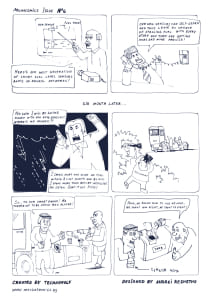If your GPS-tracker allows you to connect the fuel level sensor via the digital RS485 / RS232 / CAN interface – it should be preferred to the analog or frequency input. There are following reasons: 1. If we use the usual analog output of the fuel level sensor, the value of the fuel level in the tank is transmitted using the voltage, which is measured using the ADC converter of the terminal. Typically, the ADC converter of the terminal has a resolution of 10 or 12 bits, which gives 1023 or 4095 points. It would seem that having 4095 samples of the height of the fuel level sensor is not bad, however, it should be noted that this resolution applies to the entire analog input range of the terminal, usually it is 0-30 Volts. On the other hand, the output signal of the fuel level sensor does not exceed 10 volts, and we use only a third of the specified range. Thus, with a 12-bit ADC, we cannot have more than 4095/3 = 1365 points to the height of the level sensor, which is not so bad, but with a 10-bit ADC, only 341 points remain. On a 700-liter tank, the terminal will not be able to distinguish a portion of fuel less than two liters, even if the sensor able to do it.
2. An even more important problem when connecting an analog signal is that this value depends on electrical interference, on the quality of the connections, on the quality of the “ground” from which the voltage is measured. The sensor chart is more noisy.
3. Using the frequency interface to transmit fuel level values (500-1500 Hz) almost eliminates problems №№ 1-2, however this method has the following disadvantages: a small number of GPS terminals supporting this interface; if the frequency value is transmitted in integers, then we have only 1000 resolution points for the sensor height (Maximum – 1500 Hz, minimum – 500 Hz); if the volume of fuel in the tank needs to be displayed not only in the monitoring software, but also on the on-board display – the frequency value will have to be converted twice – in the display and in the software. In this case, you can get a small difference due to different methods of conversion.
4. Only one sensor can be connected to one analog or frequency input. Therefore, the most functional interfaces for connecting fuel level sensors are digital: RS485, CAN and, to a lesser extent, outdated RS232 interface.
Benefits:
1. Digital interfaces have error correction tools. If the sensor signal is received by the GPS tracker, we can be sure that this is exactly the value that the sensor transmitted.
2. Through the digital interface, you can transfer the amount of fuel immediately in liters, without the need to recalculate it. So you can achieve identical readings on the on-board display and in the monitoring software.
3. Via the RS485 or CAN interface, you can connect several fuel level sensors at once.
4. When using a digital interface, the maximum number of points at the height of a level is determined by the settings of the level sensor, and can be above 4095. This is useful for measuring the level in large containers.













We are in social media
Facebook
LinkedIn
Youtube